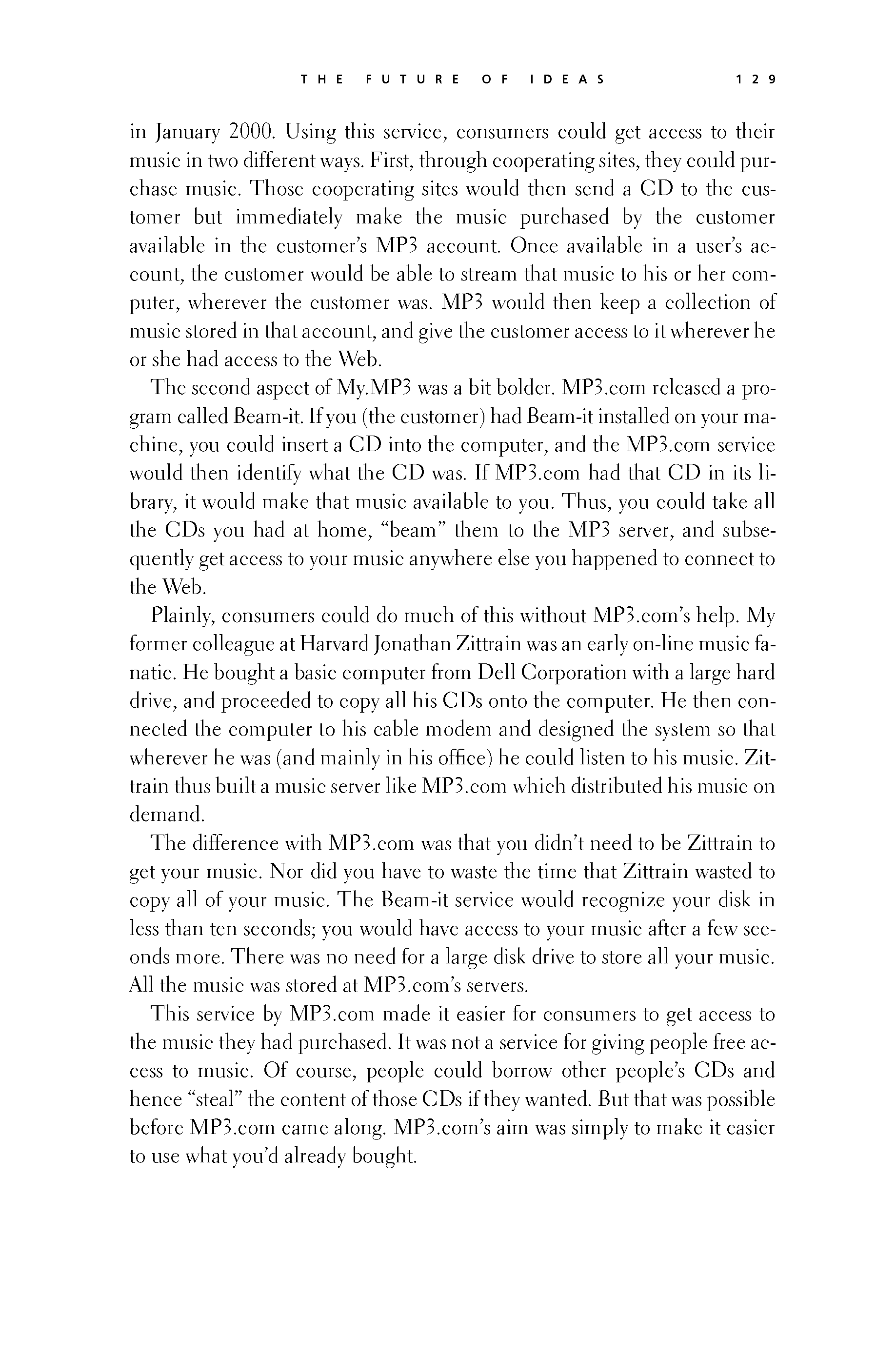 p128 _
-chap- _
toc-1 _
p129w _
toc-2 _
+chap+ _
p130
p128 _
-chap- _
toc-1 _
p129w _
toc-2 _
+chap+ _
p130
in January 2000. Using this service, consumers could get access to their
music in two different ways. First, through cooperating sites, they could pur-
chase music. Those cooperating sites would then send a CD to the cus-
tomer but immediately make the music purchased by the customer
available in the customer's MP3 account. Once available in a user's ac-
count, the customer would be able to stream that music to his or her com-
puter, wherever the customer was. MP3 would then keep a collection of
music stored in that account, and give the customer access to it wherever he
or she had access to the Web.
The second aspect of My.MP3 was a bit bolder. MP3.com released a pro-
gram called Beam-it. If you (the customer) had Beam-it installed on your ma-
chine, you could insert a CD into the computer, and the MP3.com service
would then identify what the CD was. If MP3.com had that CD in its li-
brary, it would make that music available to you. Thus, you could take all
the CDs you had at home, "beam" them to the MP3 server, and subse-
quently get access to your music anywhere else you happened to connect to
the Web.
Plainly, consumers could do much of this without MP3.com's help. My
former colleague at Harvard Jonathan Zittrain was an early on-line music fa-
natic. He bought a basic computer from Dell Corporation with a large hard
drive, and proceeded to copy all his CDs onto the computer. He then con-
nected the computer to his cable modem and designed the system so that
wherever he was (and mainly in his office) he could listen to his music. Zit-
train thus built a music server like MP3.com which distributed his music on
demand.
The difference with MP3.com was that you didn't need to be Zittrain to
get your music. Nor did you have to waste the time that Zittrain wasted to
copy all of your music. The Beam-it service would recognize your disk in
less than ten seconds; you would have access to your music after a few sec-
onds more. There was no need for a large disk drive to store all your music.
All the music was stored at MP3.com's servers.
This service by MP3.com made it easier for consumers to get access to
the music they had purchased. It was not a service for giving people free ac-
cess to music. Of course, people could borrow other people's CDs and
hence "steal" the content of those CDs if they wanted. But that was possible
before MP3.com came along. MP3.com's aim was simply to make it easier
to use what you'd already bought.
[[129]]
p128 _
-chap- _
toc-1 _
p129w _
toc-2 _
+chap+ _
p130